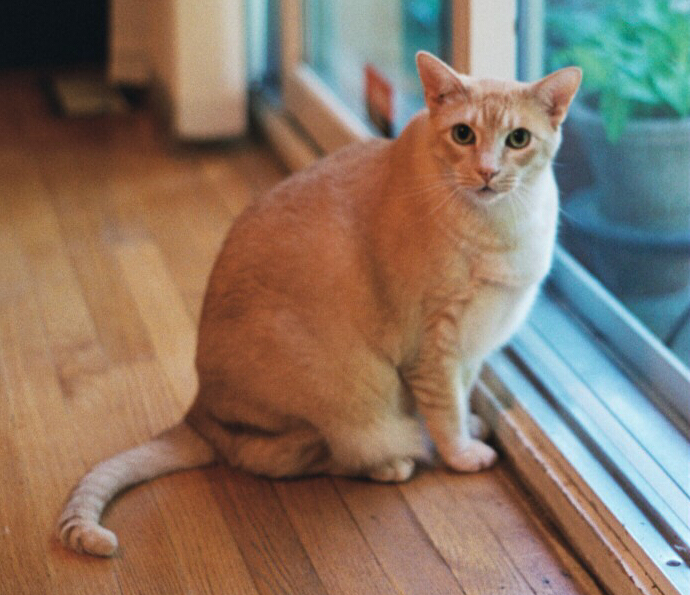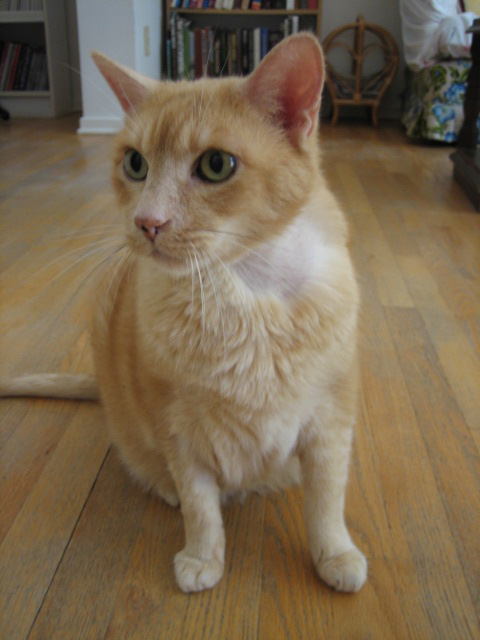
Weightloss in senior cats
TORONTO, ON – Weight loss and decline in body condition are the easiest problems to detect in senior cats (≥10 years of age). However, according to a recent survey, only 73% of respondents felt that weight loss in a senior animal warranted veterinary attention, demonstrating that not all pet owners appreciate the significance of these signs, explained Susan Little, DVM, DABVP (Feline), presenting at the Ontario Association of Veterinary Technicians Conference.
Causes of weight loss in senior cats
According to one study, the heaviest cats tended to be neutered males aged 5-8 years
while cats over 11 years tended to have lower body weights than younger cats. This is
probably because maintenance energy requirements (MERs) in cats decrease by about 3%
per year up until about 11 years old. After 11 years of age, MERs probably increase and
may contribute to a senior cat being underweight if its energy requirements are not being
met. Dr. Little said that lean body mass drops dramatically after 12 years of age, while
mean percentage of body fat also decreases progressively after 12 years of age, and
therefore the lean body mass to fat ratio does not significantly change with aging.
While changes in feeding patterns occur with age in some species and may contribute to weight loss, this does not seem to be the case in cats. One study revealed that while cats of all ages consume regular small meals during both day and night, cats 12 years of age and older were more likely to be fed canned foods and table scraps compared to younger cats. The change in feeding patterns is therefore based on the owner’s attitude and perhaps concern for the senior cat’s wellbeing. Despite the numerous advantages of feeding canned diets to senior cats (e.g., increased water content, higher proportion of animal source protein), most canned diets have a lower caloric density based on volume fed than dry diets. Therefore, she stressed, attention must be paid to ensure the caloric intake of cats on canned diets is appropriate.
Causes of weight loss in senior cats may be categorized by quality of appetite. With a normal or increased appetite, diseases causing malabsorption or maldigestion (e.g., inflammatory bowel disease, gastrointestinal lymphoma) or excessive protein loss (e.g., protein-losing nephropathy or enteropathy, diabetes mellitus, hyperthyroidism) must be considered. With a diminished appetite, investigations must focus on oral cavity disease, systemic diseases (e.g., neoplasia, chronic kidney disease, liver disease, gastrointestinal disease, retroviral infection) and diseases causing pain (e.g., degenerative joint disease).

"Honeydew" at age 5

"Honeydew” at 10 years showing weight loss from aging and diabetes
Other reasons for weight loss in senior cats may be the presence of diseases and decreased appetite due to dulling senses of taste and smell. Early detection of weight loss and loss of lean body mass is important as it may lead to early detection of disease; the body weight and body condition score should be determined and recorded at every opportunity, since weight loss may be the earliest sign of disease. Muscle condition scoring is also useful in senior cats for early detection of loss of body condition. Dr. Little noted that diseases causing weight loss in senior cats are not always associated with inappetence; since weight loss can occur with either an increased or decreased appetite, it is important to encourage owners to report any change in appetite.
Diagnosis of weight loss in senior cats
A complete history, including a nutritional history, is the first step in diagnosis. Diet
quality should be investigated to ensure the patient is receiving an adequate amount of
energy and protein. Attention should be paid to trends in food and water consumption and
questions should be asked about signs of pain, behaviour changes, changes in elimination
patterns, and changes in mobility as well as presence of vomiting or diarrhea. Senior cats
may be receiving multiple medications, many of which cause gastrointestinal distress
including anorexia, such as NSAIDs, antibiotics, and cardiac medications. A thorough
physical examination should include assessment of weight, muscle and body condition,
an orthopedic examination, and blood pressure measurement.
Specific areas that may yield valuable clues include:
Dental and oral diseases, which are common in older cats, may be associated with pain
and decreased appetite.
An eye exam, including the retina, may provide evidence consistent with systemic
hypertension as well as conditions such as glaucoma, neoplasia, and infectious diseases.
The neck and thorax should be examined for evidence of thyroid nodules associated with
hyperthyroidism. Cardiac changes associated with hyperthyroidism or hypertension may
be detected, and decreased thoracic compressibility may be associated with masses or
effusions.
Ways to encourage senior cats to eat
1. Offer fresh favourite and familiar foods to avoid learned aversions.
2. Use wide, shallow food and water bowls.
3. Warm the food to body temperature.
4. Moisten the food.
5. Feed in a quiet, stress-free environment.
6. Use encouragement and praise during feeding.
The musculoskeletal system should be examined for signs of muscle wasting, especially
over the lumbar area; swelling, pain and stiffness in joints may be associated with
degenerative joint disease.
The minimum laboratory database for investigation of weight loss in senior cats includes
a complete blood cell count, serum biochemistries and electrolytes, total T4, complete
urinalysis, and retroviral testing. Cats with protein/calorie malnutrition may have
lymphopenia, anemia, lower than expected BUN and creatinine, and increased liver
enzymes and bilirubin. In severely protein deficient animals, serum total protein and
albumin may be reduced. Serum creatinine kinase activity may be a useful marker for
assessment and monitoring of nutritional status in cats.
Further laboratory investigations may include bile acid testing and extended thyroid
hormone testing. Pancreatic and gastrointestinal disease are common causes for weight
loss that may not be readily apparent from the history, physical examination and initial
laboratory testing. Blood tests include cobalamin, folate, and feline pancreatic lipase
immunoreactivity. Finally, more advanced diagnostics will be indicated for a subset of
patients, such as abdominal imaging or endoscopy. Exploratory laparotomy or
laparoscopy should be considered when the cause of weight loss remains undiagnosed.
During surgery, samples for histopathology should be collected even if the tissue appears
grossly normal. Sites to sample include liver, pancreas, lymph nodes, stomach and
multiple areas of the small intestine.
Non-specific management of weight loss
Non-specific measures for nutritional support are often part of the treatment plan;
encouraging increased food intake can be accomplished by feeding an energy-dense,
nutrient-dense diet that is palatable to the cat. Initially it is best to feed familiar foods
because it is better for a sick cat to eat any food rather than no food at all. Short-term use
of appetite stimulants may be helpful in some anorexic cats. If adequate food intake
cannot be achieved within two to three days, nutritional support via tube feeding should
be considered.
Dr. Little concluded by stressing that owners should be educated to monitor the daily
food intake of senior cats carefully. For cats that eat individually, this can be done by
weighing food bowls before and after feeding. This can be valuable information for the
clinician, and can also serve to remind the owner to feed appropriately. CVT




